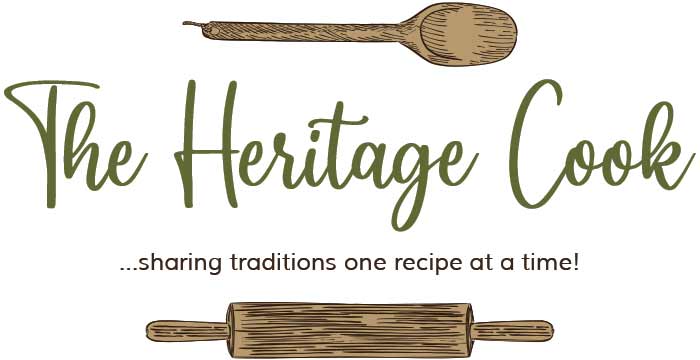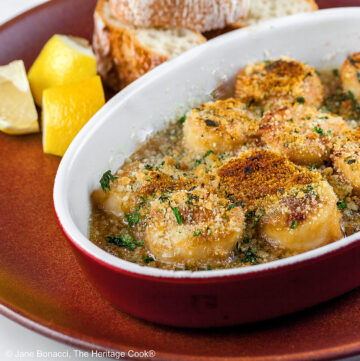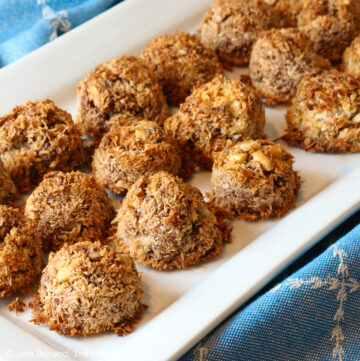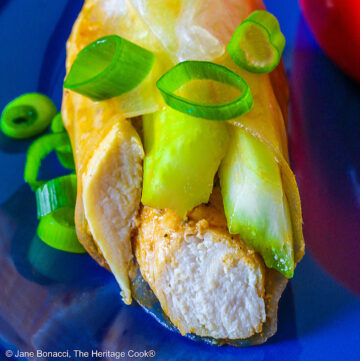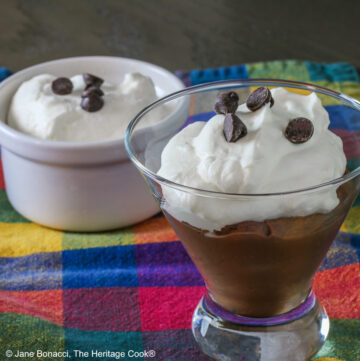The most important ingredient in gluten-free baking is FUN!
Read through these notes written by some of the finest gluten-free bakers today. You will learn a great deal about how different ingredients behave, compare to each other and taste. Use this to help you gain confidence and success in your own gluten-free baking.
Substituting Gluten-Free Flours for Regular All-Purpose Flour in Recipes
You can’t really exchange any non-gluten flour cup-for-cup with wheat-based all-purpose flour, because every gluten-free flour has a different weight per cup. The most accurate way to measure dry ingredients in baking (and is always the method used in professional bakeries) is by weight not volume. Buy a kitchen scale. Problem solved.
In gluten-free baking the golden rule is 1 cup of all-purpose bleached white flour = 120 grams. Since most baked goods recipes in America were developed with gluten flour just use 120 grams of your gluten-free flour blend in place of the AP.
Tips for Converting Recipes to Gluten-Free
Source: Vegiac.com
Here are my general guidelines on how to convert traditional wheat flour recipes, into gluten free recipes. They work best for cakes, cornbread, muffins, pancakes and nut breads.
Most of the time, I use various combinations white or brown rice flour, coconut flour, quinoa flour, and cornmeal; with rice flour usually being the largest measurement. The cornmeal I have been using, is made by Arrowhead Mills and it has a very fine grind, that in my opinion, is much closer to a flour than a meal.
1. Your preferred GF flour/mix, instead of wheat flour
2. Add 1/2 tsp xanthan gum for each cup of flour (unless your blend already has xanthan gum in it).
3. Reduce liquid by about 1/3 and add applesauce, pureed banana, pumpkin, sweet potato, or squash to make up the difference. These fruits/veggies contain natural pectin, which helps with binding and also adds moisture, while improving texture.
4. Add one extra egg, or two extra egg whites (really helps with binding and texture!).
5. Mix wet ingredients together on a high speed for about a minute, before mixing into well blended dry ingredients … this process helps to trap air, especially with the extra egg whites (think meringue), which in turn creates a lighter texture.
Using a Pre-Mixed Flour Blend
Source: Vegiac.com
Just a warning: Be careful! Many mixes say that they are 1-to-1 replacements, however they contain baking powder and sugar, so can cause things to go wonky. Additionally you need to understand that most gluten-free flours don’t hold moisture as well as typical wheat flour, and you have to replace the elasticity provided by the missing gluten (for some recipes the prepared flour mixtures take care of this for you, however you may still need to tweak things).
While I can suggest that you use meringue to help give cookies structure without having them crumble when picking them up, or that you use applesauce in cakes to keep them moist. A lot of this kind of information comes from simply understanding the science of cooking (and baking). Suggested reading includes:
- On Food and Cooking: The Science and Lore of the Kitchen by Harold McGee
- BakeWise by Shirley Corriher
How to Convert Your Favorite Recipes to Gluten-Free / Dairy-Free
Source: American Mental Health
Gluten Free recipes don’t rise as well as wheat based recipes. So I usually double the baking powder the wheat based recipe calls for when cooking gluten free. If a recipe calls for baking soda that is not complimented with vinegar in the same recipe then I change it to baking powder. For example, some chocolate chip cookie recipes call for both baking soda and baking powder. I have had little success using baking soda in gluten free baking.
Because gluten free baking needs help to stick together and not get crumbly Xanthan gum is commonly used. It helps the cookies or muffins rise as well as stick together. Add 1/4 tsp Xanthan gum for each cup of flour your recipe calls for. The average cookie recipe calls for about 2 cups of flour so adding 1/2 tsp Xanthan gum should be about right.
Gluten free cookies, muffins, and cakes can easily become tough and rubbery. My experience has been that this problem is usually caused by over mixing after the Xanthan Gum is added. It is, after all, a gum. Once Xanthan gum or any other gum is added very little stirring is recommended after that. As a result I hold the gum until all mixing is done and sprinkle it on top of the dough or batter. Gently mix it to the dough or batter using 5 to 10 strong stirring strokes then prepare my project for baking as needed.
Usually pan preparation, baking temperature and time remain the same. Use a toothpick or knife to check if muffins or cakes are done. Brownies and cookies that remain soft when they are eaten are the most difficult to decide baking time. Do not over bake them. When in doubt bake a shorter period of time and put the project back into the oven if needed.
To convert recipes, use the following steps:
1) Double the baking powder
2) Use a gluten-free flour mix
3) Use dairy free milk and margarine substitutes as needed
4) Add 1/4 tsp Xanthan gum per cup flour, but stir in the Xanthan gum last after all other ingredients are already mixed in.
5) Bake at the same temp and about the same amount of time.
Remember converting a recipe is tricky. It may take several trials to get the recipe just right. We keep a notebook in the kitchen of all the converted recipes or we write the changes into our recipe books. This method of record keeping allows us to remember what worked last time and make progressive changes if needed. Be patient. It will probably be worth the small amount of trial and error needed to get a recipe right. Allow your taste buds to adjust. The flavors probably will not be identical, but should be close. Good Luck!!
Gluten-Free Conversions of Flours
Source: Suite 101.com
1 cup of wheat flour equals:
- Amaranth = 1 cup
- Bean Flour = 1 cup
- Corn Flour = 1 cup
- Cornmeal = 3/4 cup
- Millet Flour = 1 cup
- Finely Ground Nuts = 1/2 cup
- Oat Flour = 1-1/3 cups
- Potato Flour = 5/8 cup
- Potato Starch = 3/4 cup
- Quinoa Flour = 1 cup
- White or Brown Rice Flour = 7/8 cup
- Sorghum Flour = 1 cup
- Soy Flour = 3/4 cup
- Sweet Rice Flour = 7/8 cup
- Tapioca Flour/Starch = 1 cup
- Teff Flour = 7/8 cup
Note: When using almond flour, always combine it with a GF-AP blend. For 2-1/2 cups wheat flour in a recipe, substitute 1/2 cup almond meal for 1 of the cups and 1-1/2 cups GF-AP. Almond flour is particularly good in pie crusts, pastries, cookies and sweet breads.
General Guidelines for Using Xanthan Gum or Guar Gum
Source: http://glutenfreecooking.about.com
Gum (xanthan or guar) is the key to successful gluten-free baking. It provides the binding needed to give the baked product proper elasticity, keeping it from crumbling.
- Add 1/2 tsp xanthan or guar gum per cup of flour blend to make cakes, cookies, bars, muffins and other quick breads.
- Add 1 tsp per cup of flour blend to make yeast bread, pizza dough or other baked items that call for yeast.
- If you purchase a commercial flour blend, read the ingredient list carefully. Some blends contain salt and xanthan or guar gum. If so, there is no need to add more.
Binders when Baking Breads
Source: Suite 101.com
Arrowroot Powder – 1/2 tsp for each cup of wheat flour; round UP if there is a partial cup (if the orig recipe calls for 2-1/2 cups flour, add 1-1/2 tsp arrowroot powder).
Xanthan Gum – 1 tsp for each cup of wheat flour; round DOWN for partial cups (for 2-1/2 cups flour, add 2 tsp xanthan gum).
Gluten-Free Ingredient Characteristics and Uses
Information gathered from many different online sources as well as personal experience.
Brown Rice Flour
Stone ground on a very fine setting to avoid gritty texture in your baked goods. Adds a more wheat-like flavor.
White Rice Flour
White Rice Flour is freshly and finely ground from premium California white rice. Use for gluten free breads. It is also used to make Asian gluten-free noodles.
Sweet White Rice Flour
Sweet White Rice Flour is made from high-starch, short-grain rice and is used in Asian cooking to thicken sauces and in desserts.
Potato Flour (not starch)
Potato Flour is ground from 100% dehydrated whole potatoes and is used in bread, pancake and waffle recipes or as a thickener for smoother sauces, gravies and soups.
Also used in gluten-free and allergy cooking.
Potato Starch
Different from Potato Flour. Used as a thickener for sauces, soups and stews. Potato starch tolerates higher temperatures than cornstarch when used as a thickener (won’t break down under high heat.) Adds moistness to many baked goods.
Sorghum Flour
High in nutrients and adds superb flavor to gluten-free baking. Add 15% to 20% sorghum flour to your homemade flour mixes to make delicious breads, cakes, and cookies. Similar flavor to millet.
Tapioca Flour
Derived from the cassava root, tapioca flour is starchy, slightly sweet, white flour. Use 1/4 to 1/2 cup per recipe to sweeten breads made with rice and millet flour. It is an excellent thickener for pie fillings.
Xanthan Gum
Xanthan Gum adds volume and viscosity to bread and other gluten-free baked goods. It is made from a tiny microorganism called Xanthomonas campestris and is a natural carbohydrate.
Guar Gum
A white flour-like substance made from an East Indian seed. Use small amounts as a thickener, binder, and volume enhancer.
Almond Meal/Flour
Made from whole, raw, blanched almonds that have been ground into a fine powder. Use in cakes, cookies, sweet breads, and a host of other desserts. Store in freezer to extend its shelf life.
Fava Bean Flour
Fava beans are trimmed and then ground into a fine flour for your baking and cooking needs. It has a stronger flavor than other flours that some find more appropriate for savory cooking and baking.
Garbanzo Bean Flour
Popular in Middle Eastern cooking and baking. Substitute 7/8 cup for each 1 cup of wheat flour in baked goods. Can also be used to make hummus.
Bob’s Red Mill GF All Purpose Baking Flour Blend
Can be used to make cakes, cookies, breads and breakfast items such as muffins, pancakes and waffles. Contains garbanzo flour, potato starch, tapioca flour, sorghum flour and fava flour. You will need to add xanthan or guar gum to most recipes. (I use this in my savory baking and cooking.)
Garbanzo Fava Flour
A blend of garbanzo and fava bean flours, you can use it in all kinds of baking including breads, pizza, cakes, and cookies. Use in place of rice flour in any recipe; provides protein for superb GF baking.
Masa Harina
Naturally gluten-free, it is made from grinding corn that has been soaked in lime and then dried. Use it to make homemade corn tortillas or tamales.
Corn Grits / Polenta
Made from ground dried corn, use this to make the Southern breakfast classic, grits. You can serve it savory with onions, peppers and sausage added, or sweet with milk and honey or brown sugar. Italian restaurants and home cooks offer polenta as a side dish; often served beneath grilled or sauteed Italian sausages and peppers for a filling meal.
Oats / Oat Flour
Oats are a naturally gluten-free grain, but most facilities that process it do not adhere to a strict gluten-free process and do not necessarily purchase their oats from dedicated oat-only fields. Thus, it is important to purchase gluten-free oats if you have celiac disease. The oats can also be finely milled into a flour suitable for all of your gluten-free baking.
Flaxseed Meal
Golden Flaxseed Meal is freshly milled to preserve the natural oils and nutrients. Ground flaxseed has a nutty taste and is a noted health-giving digestive aid. Keep refrigerated for freshness.
Hazelnut Flour/Meal
Made from pure, ground hazelnuts (or filberts). It has a sweet, nutty flavor and is perfect for adding a rich flavor to all baked goods, from breads and muffins to cakes and cookies. Substitute up to 1/3 of the recommended flour in your favorite recipes with the hazelnut flour/meal. Low in carbohydrates and a good source of dietary fiber and protein.
Millet Flour
Millet Flour has a subtle flavor, lots of vitamins and minerals, and adds a lovely creamy color to baked goods. Substitute 1/4 cup millet flour for an equal amount of unbleached white flour in any baked good (cookies, breads, pancakes… whatever you like) to add more nutrition and a unique flavor.
Organic Amaranth Flour
Organic Amaranth Flour is gluten free flour originally from South America. Its cultivation, appearance and uses are similar to grains and can be used to replace 25% of the flour in your own recipes. It is 100% stone ground and great for gluten free baking when combined with another non-grain flour or starch. It’s especially high in lysine which is lacking in many grains.
Coconut Flour
Coconut Flour is a delicious, healthy alternative to wheat and other grain flours. It is very high in fiber, low in digestible carbohydrates, a good source of protein and gluten free. It lends baked goods an incomparably rich texture and a unique, natural sweetness. You can replace up to 20% of the flour called for in a recipe with Coconut Flour, adding an equivalent amount of additional liquid to the recipe (it tends to absorb liquid from the other ingredients which can leave your baked goods dry).
Quinoa Flour
Organic Quinoa (pronounced keen-wa) is the most nutritious grain available. It is also one of the oldest cultivated grains in the world. Quinoa is high in protein, calcium and iron. Use this delicate flour when baking. You can substitute this flour for 1/2 of the all-purpose flour in many recipes or completely replace wheat flour in cakes and cookie recipes.
Teff Flour
Teff Flour is a pleasingly light, slightly nutty flavored, whole grain flour. It is excellent in pie crusts when blended with another gluten-free flour. Substitute teff for about 1/4 of the all-purpose flour called for in your favorite baked goods recipe to add an appealing taste and added nutrition. Packed with protein and calcium, it also contains nearly as much iron in 1 cup of cooked teff grain as the USDA recommends for adults in one day! Ethiopians make a flat crepe-like bread called injera from teff flour which has a slight sourdough flavor and tough texture.
